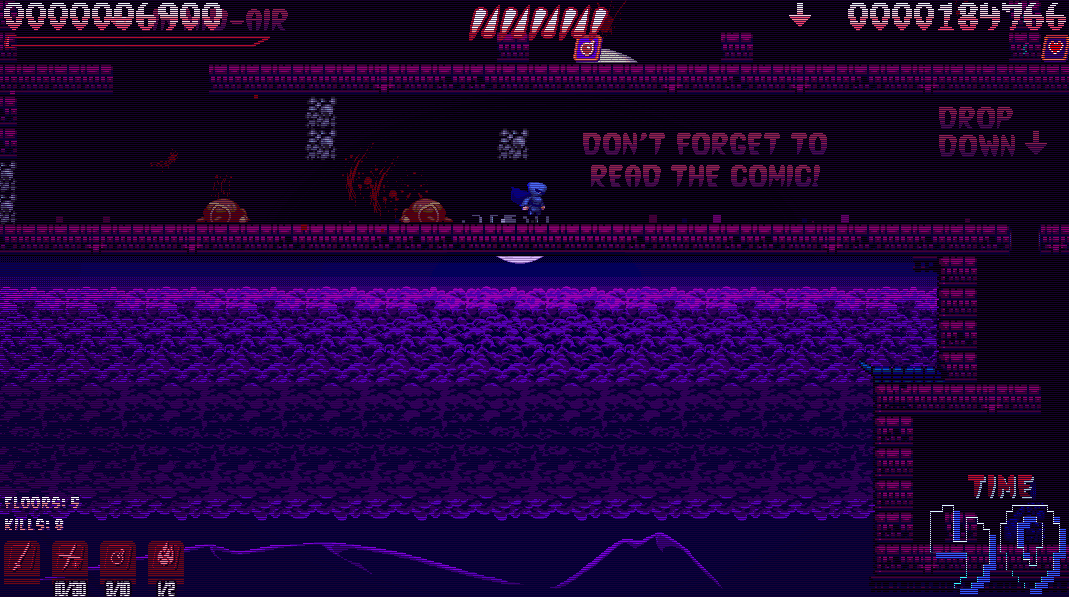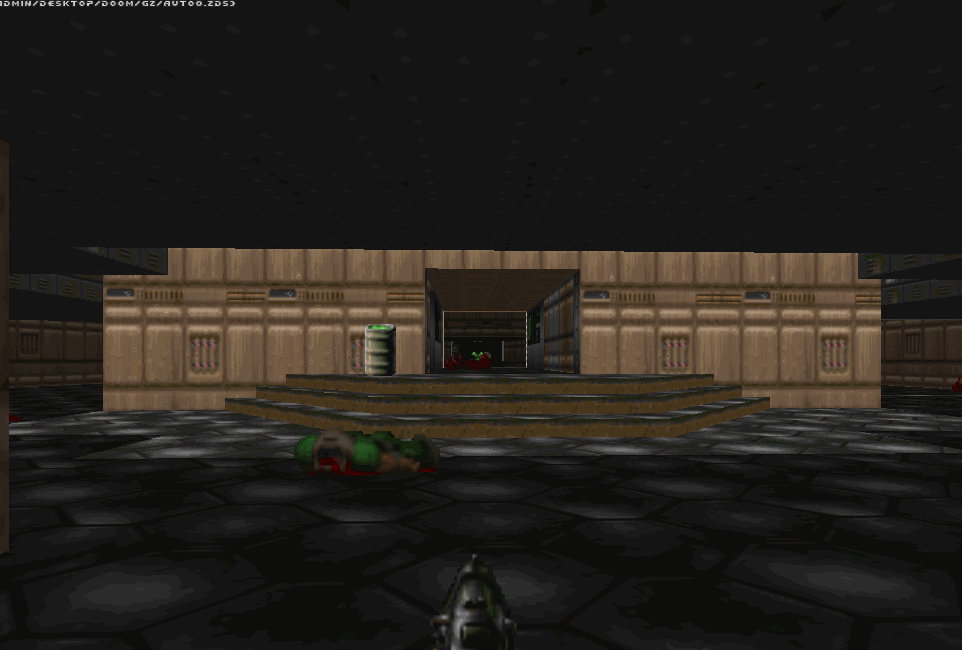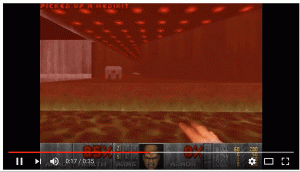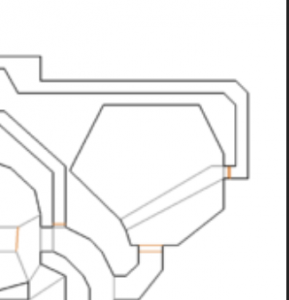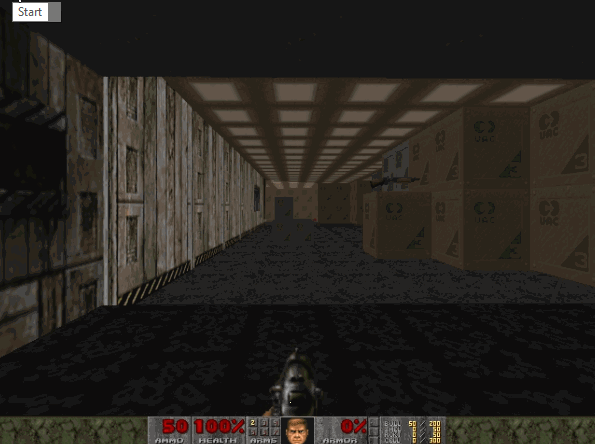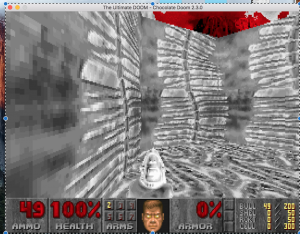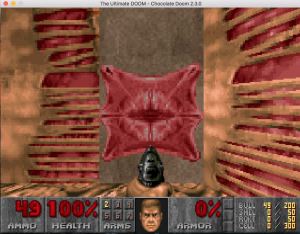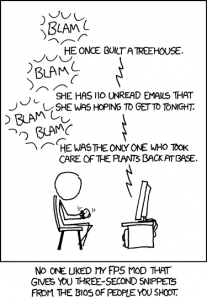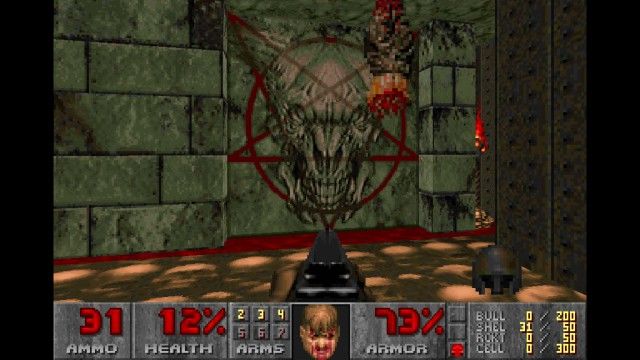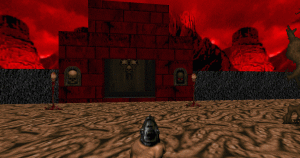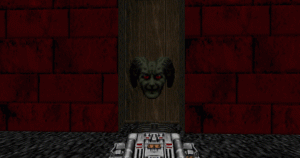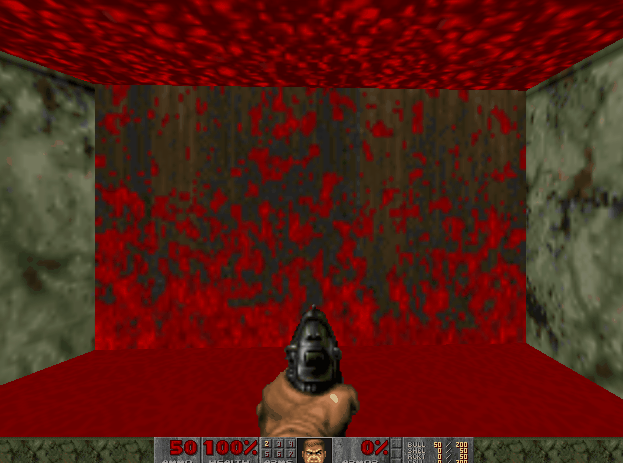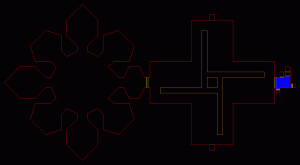This week I chose to speed run the same level that I toured last week — E2M2, also known as “Containment Area.” I chose this level in particular for a two reasons. For one, I was already pretty familiar with it. And two, as we watched the speed run in class, I noticed a couple tricks that Dime performed that I thought would be interesting to explore.
I started out by using the invulnerability cheat, and just getting used to the route that I was going to use. At first, I tried going the route that Dime went. However, this route meant that I would have to learn how to strafe jump, which was much more difficult than I expected. The speed runners that we watched always made it look so easy. It was even more frustrating to learn on this level in particular because if you missed the jump, there was a very long path to get back to the spot to try it again.
So I ended up choosing a different path, that involved hitting a button which brought up the bridge to the exit. Eventually I turned off the invulnerability when I got more comfortable with my route.
Overall I found speed running to be a pretty fun and interesting experience, and I definitely see why it is so popular, especially in the DOOM community.

